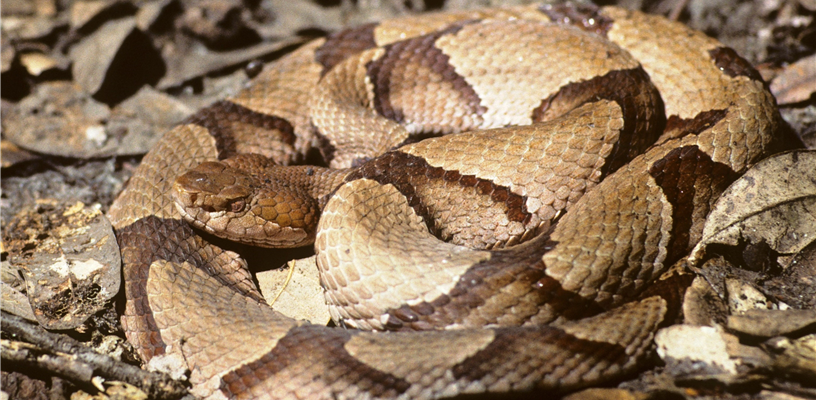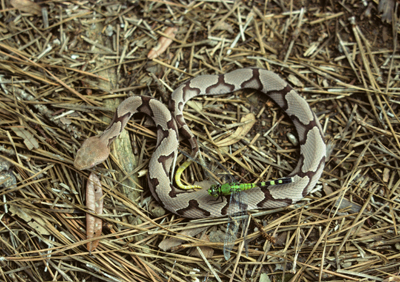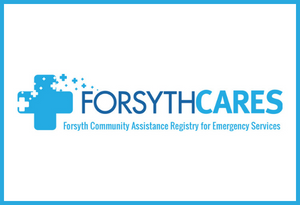
- By Phyllis B. Smith
- Posted Sunday, June 2, 2019
If You Think This Snake is Venomous, You’re Right!

The Copperhead, Agkistrodon contortrix, is the only species of venomous snake commonly found in Forsyth County, N.C. In addition to a copper-colored head, hour-glass markings run the length of the body. Juveniles possess the same pattern, but also display a yellow or greenish tail tip that is used to lure small prey. Copperheads use heat-sensitive pits on either side of the head to detect the rodents, birds, insects, and amphibians on which they feed. Like other “pit vipers”, they also have hollow fangs to inject venom into prey. Because these fangs are also used in defense, it’s good to know some strategies to help minimize encounters. First, never try to handle a venomous snake and make sure that children know to leave snakes alone. Create a backyard habitat that is non-attractive to copperheads by eliminating sources of food, water and shelter. Practices such as placing pet food outdoors or allowing birdseed to collect on the ground can attract rodents, which may also attract snakes. Overgrown hedges, tall grass, trash, and other forms of debris provide hiding places and allow water to collect. Be aware that copperheads are more active at night, so carry a flashlight and skip going barefoot on summer evenings. Fortunately, copperhead bites are rarely fatal to humans and only one death has been documented in North Carolina. However, all venomous snake bites should be considered serious, requiring prompt medical attention. Immediately call 911 and keep the victim calm until professional help can be obtained.
For further details on all North Carolina snakes visit the Amphibians and Reptiles of North Carolina website, http://herpsofnc.org/, maintained by the Davidson College Herpetology Lab and click on any “Snakes” thumbnail.
N.C. State University Extension offers the publication Reptiles and Amphibians in Your Backyard, https://content.ces.ncsu.edu/reptiles-and-amphibians-in-your-backyard. Download here, or drop by the Forsyth County Center of N.C. Cooperative Extension at 1450 Fairchild Road in Winston-Salem to pick up a free copy.
Sources:
Dorcas, D. (2005). A Guide to Snakes of North Carolina. Davidson College Herpetology Lab, Davidson, N.C.
Braswell, A., Palmer, W., and Beane, J. (2003) Venomous Snakes of North Carolina. North Carolina Museum of Natural Sciences, Raleigh, N.C.











